|
Stay up to date with video podcasts from the National Gallery of Art, which include documentary excerpts, lectures, and other films about the Gallery's history, exhibitions, and collections. |
|
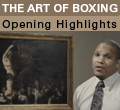 |
The Art of Boxing—George Bellows at the National Gallery of Art, Washington In The Art of Boxing, Sharmbá Mitchell, former two-time Junior Welterweight Champion of the World, and Charles Brock, associate curator of American and British paintings at the National Gallery of Art, Washington, talk about four of the greatest sports paintings in American art―Club Night (1907), Stag at Sharkey's (1909), Both Members of This Club (1909), and Dempsey and Firpo (1924)―by George Bellows (1882–1925), now on view as part of a landmark retrospective exhibition of Bellows' work at the National Gallery of Art in Washington through October 8, 2012. Watch | Watch on ArtBabble | iTunes | RSS |
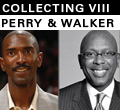 |
The Collecting of African American Art VIII: Elliot Perry and Darrell Walker in Conversation with Michael Harris Recorded on February 26, 2012, as part of the National Gallery of Art lecture series The Collecting of African American Art, former National Basketball Association players Elliot Perry and Darrell Walker discuss their collections of African American art and art of the African diaspora with Professor Michael D. Harris. Perry and Walker began to collect art during their extensive travels for their professional sports careers, and both have amassed important holdings of modern and contemporary art that have been exhibited throughout the United States. Both have also dedicated themselves to educational and philanthropic causes to preserve and showcase African American culture. Professor Harris is an artist, curator, and scholar of contemporary African and African American art and has contributed to the exhibition catalogue Images of America: African American Voices: Selections from the Collection of Mr. and Mrs. Darrell Walker. Watch | Watch on ArtBabble | iTunes | RSS |
 |
Ann Hamilton Ann Hamilton presented a lecture on her nearly 30-year career as part of the Diamonstein-Spielvogel Lecture Series at the National Gallery of Art on September 16, 2011. Hamilton has made multimedia installations with stunning qualities and quantities of materials: a room lined with small canvas dummies, a table spread with human and animal teeth, the artist herself wearing a man's suit covered in a layer of thousands of toothpicks. Along the way, she has constantly set and reset the course of contemporary art. Often using sound, found objects, and the spoken and written word, as well as photography and video, her objects and environments invite us to embark on sensory and metaphorical explorations of time, language, and memory. Textiles and fabric have consistently played an important role in her performances and installations—whether she is considering clothing as a membrane or (more recently) treating architecture itself as a kind of skin. The Gallery owns 15 works by the artist, including photographs, prints, sculptures, and a video installation. Watch | Watch on ArtBabble | iTunes | RSS |
 |
Paris to Fort Lee: French Filmmakers and the American Industry A centennial screening of the 1912 film Robin Hood and rare presentation of the Maurice Tourneur film Alias Jimmy Valentine (1915) with live piano accompaniment are introduced by film historian Richard Koszarski, author of Fort Lee, the Film Town and Hollywood on the Hudson. Koszarski's presentation outlines the influence of French culture on early cinema production and investigates the history of the studios, the directors, and the stars established in Fort Lee, New Jersey, known as the "birthplace of the motion picture industry." Watch | Watch on ArtBabble | iTunes | RSS |
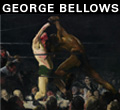 |
George Bellows, Part 1 and 2 Narrated by Ethan Hawke, this film was made in conjunction with the exhibition George Bellows. Bellows arrived in New York City in 1904 and depicted an America on the move. In a 20-year career cut short by his death at age 42, he painted the rapidly growing modern city—its bustling crowds, skyscrapers, and awe-inspiring construction projects, as well as its bruising boxers, street urchins, and New Yorkers both hard at work and enjoying their leisure. He also captured the rugged beauty of New York's rivers and the grandeur of costal Maine. This documentary includes original footage shot in New York City and Maine; examples of Bellows' paintings, drawings, and prints; and archival footage and photographs. Watch | iTunes | RSS |
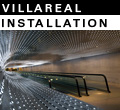 |
"Multiverse," Leo Villareal Installation (September 8-December 6, 2008) Multiverse (2008), a site-specific LED sculpture by Leo Villareal, is on view in the Concourse walkway connecting the East and West Buildings of the National Gallery of Art. The sculpture, which includes approximately 41,000 LED (light-emitting diode) nodes controlled by custom-designed software, is Villareal's largest and most ambitious work to date. Watch Gallery staff and volunteers install the LED nodes over the course of 65 days (the process was captured in 58,296 photographs). The sculpture was generously funded by Victoria and Roger Sant and Sharon P. and Jay Rockefeller. Watch | iTunes | Watch on ArtBabble | RSS |
 |
Joan Miró: The Ladder of Escape This short documentary, narrated by Ed Harris, was produced by the National Gallery of Art in conjunction with the exhibition Joan Miró: The Ladder of Escape. Joan Miró was passionately committed to his native Catalonia and its struggle for independence from Spain. But he also longed to escape into artistic freedom. This tension drove his art in strange and beautiful ways. Miró was by turns influenced by Dada, surrealism, and abstract expressionism. His changes in styles and subjects also reflected the horrific events of the Spanish Civil War, World War II, and the dictatorship of Franco. This documentary includes original footage shot in Barcelona and Catalonia, images of Miró's paintings and sculpture, and archival footage and photos. Watch | iTunes | RSS |
 |
David McCullough, "Morse at the Louvre" David McCullough, a two-time Pulitzer Prize–winning author and recipient of the National Book Award, discusses his new book, The Greater Journey: Americans in Paris. In this video recorded on September 26, 2011, at the National Gallery of Art, McCullough tells the story of America's longstanding love affair with Paris through vivid portraits of dozens of significant characters. Notably, artist Samuel F. B. Morse is depicted as he worked on his masterpiece Gallery of the Louvre. McCullough spoke at the Gallery in honor of the exhibition A New Look: Samuel F. B. Morse's "Gallery of the Louvre," on view from June 25, 2011 to July 8, 2012. The exhibition, program, and video were coordinated with and supported by the Terra Foundation for American Art. Watch | iTunes | Watch on ArtBabble | RSS |
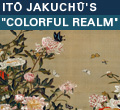 |
Itō Jakuchū's "Colorful Realm" Press Conference Highlights Featured are highlights from the National Gallery of Art's press preview for the landmark exhibition of Itō Jakuchū's "Colorful Realm of Living Beings"–a set of 30 bird-and-flower paintings on display at the Gallery from March 30 through April 29, 2012. Widely considered as one of the greatest achievements in the history of Japanese nature painting, this Edo masterpiece is on view for the first time outside of Japan. The occasion for this exhibition is the centennial of the gift of cherry trees from Tokyo to Washington, DC, in 1912. Watch | iTunes | Watch on ArtBabble | RSS |
 |
American Originals Now: Jem Cohen: Curious Visions The new ongoing film series American Originals Now focuses on the work of internationally recognized filmmakers from the Americas, and offers visitors an opportunity to interact with and share in the artists' production methodologies and current practices. The inaugural program brought recent short works by filmmaker Jem Cohen and a screening of his award-winning 1999 documentary Instrument, made in collaboration with DC-based band Fugazi. Cohen was present for both events; during the latter of the two he was joined by Fugazi frontmen Ian MacKaye and Guy Picciotto. Watch | iTunes | Watch on ArtBabble | RSS |
 |
Verbeeck's Battle: Restoring War in the Conservation Lab At the time of their acquisition in 1995, Cornelis Verbeeck's paintings Dutch Warship Attacking a Spanish Galley and Spanish Galleon Firing Its Cannons were covered with layers of discolored varnish. Their sojourn in the conservation lab, however, revealed a complex story that transformed our understanding of these paintings. Arthur Wheelock, curator of northern baroque paintings, is joined by Michael Swicklik, senior conservator, and Richard Ford, frame conservator, as they discuss this exciting discovery, and the paintings' new appearance as two halves of a reunited battle scene. Watch | iTunes | Watch on ArtBabble | RSS |
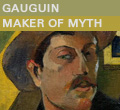 |
Gauguin: Maker of Myth, Parts 1-4 Narrated by Willem Dafoe and with Alfred Molina as the voice of Paul Gauguin, this film was made in conjunction with the exhibition Gauguin: Maker of Myth. Gauguin (1848–1903) abandoned impressionism to create an art driven less by observation than by imagination. His gifts as an artist were matched by a talent for creating myths about places, cultures, and most of all, himself. This film explores his search for an authenticity he felt missing in modern Europe, a search that took him to ever more remote lands: Brittany, Martinique, and Polynesia. Never finding the paradise of his dreams, he recreated it in his paintings, sculpture, drawings, and prints. The film is made possible by the HRH Foundation. Watch | iTunes | RSS |
 |
Wyeth Lecture in American Art: Minstrelsy "Uncorked": Thomas Eakins' Empathetic Realism Recorded on November 4, 2009, this podcast presents the fourth Wyeth Lecture in American Art, a biennial event hosted by the Center for Advanced Study in the Visual Arts and supported by the Wyeth Foundation for American Art. Richard J. Powell focuses on Thomas Eakins (1844–1916) as uniquely empathetic among the many 19th-century artists who depicted African American performance and entertainment. Eakins' Negro Boy Dancing (1887; Metropolitan Museum of Art) shows a young banjo player, an elderly teacher, and an adolescent dancer, evoking the American rage for the form of musical theater known as minstrelsy. Eakins' watercolor, along with two oil-on-board studies at the National Gallery of Art, challenged the tendency of minstrelsy to employ racial ridicule and physical exaggeration. Instead, Powell argues, Eakins adhered to a painterly realism as well as his own brand of empathy and ethics. Watch | iTunes | Watch on ArtBabble | RSS |
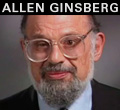 |
"The Life and Times of Allen Ginsberg" with director Jerry Aronson The award-winning film The Life and Times of Allen Ginsberg offers a fascinating portrait of a poet and photographer who helped define postwar American counterculture. Originally released in 1994, Jerry Aronson's documentary was rereleased in 2005 with additional hours of interviews with numerous contemporary artists and cultural figures, among them Andy Warhol, Patti Smith, and Norman Mailer. Two screenings of the film were held at the National Gallery of Art in September 2010. Watch | iTunes | Watch on ArtBabble | RSS |
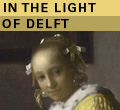 |
Vermeer: In the Light of Delft Vermeer's classic painting A Lady Writing inspired this evocative film. The exquisite skills of this 17th-century Dutch artist evoke nuances of light, texture, and reflection that describe both the artist's native city of Delft and the details of this much-loved work. Painted ermine, pearls, velvet, brass, and wood are illuminated by the sensitive touch of an unparalleled master. Watch | iTunes | Watch on ArtBabble | RSS |
 |
Turner on the Tyne The moon rises high over water and becomes one with Joseph Mallord William Turner's evocative image of the sights and sounds on the River Tyne at Newcastle in his 1835 painting Keelmen Heaving in Coals by Moonlight. Time-lapse photography interweaves with close details of Turner's painting to capture both the stillness of the night and the work of loading coals by moonlight and torch. The film was directed and produced by filmmaker and artist Grahame Weinbren. Watch | iTunes | Watch on ArtBabble | RSS |
 |
Arcimboldo: Nature and Fantasy Narrated by Isabella Rossellini and produced by the National Gallery of Art, this film traces the career of Giuseppe Arcimboldo, an artist whose work thrilled and delighted the Habsburg courts of the later 16th century. Arcimboldo was best known for his "composite heads"—faces composed of fruits, vegetables, fish, flowers, and beasts of all kinds. The film explores the connection between his paintings and the burgeoning natural sciences, the voyages of discovery, and the atmosphere of intellectual curiosity at the courts of Europe. The 30-minute version of the film is on view and for sale at the National Gallery of Art. The film is made possible by the HRH Foundation. Produced in conjunction with the exhibition Arcimboldo, 1526–1593: Nature and Fantasy. Watch | iTunes | RSS |
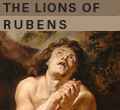 |
The Lions of Peter Paul Rubens This film captures the power of faith in the face of danger, illustrated in the famous Old Testament story of Daniel in the lions' den and in Peter Paul Rubens' full-scale painting at the National Gallery. Daniel's travail in a closed cave unfolds here through a series of comparative frames: Rubens' preparatory drawings, painted lions with human bones at their feet, and footage of actual lions, similar to those Rubens saw at the royal menagerie in Brussels. Watch | iTunes | Watch on ArtBabble | RSS |
 |
New Masters of European Cinema: Everlasting Moments by Jan Troell Veteran Swedish director Jan Troell has been called one of the world's greatest living filmmakers. As part of the ongoing series New Masters of European Cinema, the director and his partner/screenwriter Agneta Ulfsäter-Troell visited the National Gallery of Art to discuss their latest project, the award-winning feature film Everlasting Moments (2008), and to share a rare screening of Troell's remarkable first short film Stop-over in the Marshland (1965), starring Max von Sydow. Watch | iTunes | Watch on ArtBabble | RSS |
 |
Brice Marden in the Studio Brice Marden continues to make some of the most surprising and ravishing paintings of our time. In the 1960s and 1970s, he was known for matte, monochromatic paintings, often with multiple panels. His 1984 visit to an exhibition of Japanese calligraphy triggered a dramatic shift in style that culminated in a masterful series of gestural paintings and drawings entitled Cold Mountain. Since that time, through several further changes in vocabulary, Marden has continued to explore linear networks as the basis for ambitious, allover abstractions. In this video, recorded in October 2009 in the artist's Manhattan studio, Marden discusses his technique, sources of inspiration, and works in progress with Harry Cooper, curator and head of modern and contemporary art, National Gallery of Art. Watch | iTunes | Watch on ArtBabble | RSS |
 |
In the Tower: Mark Rothko This short documentary, narrated by curator Harry Cooper, was produced by the National Gallery of Art in conjunction with the exhibition In the Tower: Mark Rothko. The film considers Rothko's style, which infused abstract painting with emotional significance. Recognized in the 1950s for his use of brilliant colors, Rothko changed direction in the 1960s and produced a series of canvases known as the black-form paintings. Critics and artists often associated the darkness of these works with Rothko's bouts of illness and depression, but Cooper argues that the paintings are a continuation of the painter's lifelong exploration of light. Watch | RSS |
 |
From Impressionism to Modernism: The Chester Dale Collection A shrewd businessman, Chester Dale started out as a Wall Street messenger in the early 20th century. By 1910 he was poised to make the fortune that enabled him to assemble one of the finest collections of modern art in America. He and his wife Maud first focused on American paintings, but they soon turned their attention to French art of the 19th and early 20th centuries, acquiring a few old masters along the way. Dale's gifts to the nation, numbering more than 300 works of art, transformed the Gallery's collection and included masterpieces by Manet, Monet, Renoir, and Picasso. Never lent to other museums, these paintings can only be seen at the National Gallery of Art. Narrated by director Earl A. Powell III. Watch | RSS |
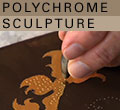 |
Making a Spanish Polychrome Sculpture This film explains the process of creating a polychrome sculpture using the J. Paul Getty Museum's Saint Ginés de la Jara (about 1692) by Luisa Roldán as an example. Seventeenth-century Spanish polychrome sculpture was intended to appear as lifelike as possible and artists frequently achieved remarkable effects of realism. The film is divided into four short chapters: The Structural Elements, Carving the Figure, Saints' Garments: Estofado Technique, and Flesh Tones: Painting the Encarnaciones. Digital animations highlight the construction of the Saint Ginés sculpture. Footage of sculptor Marcelo Moreira Santos and painter Sylvana Barrett demonstrates techniques current in 17th-century Spain. Narration provided by Zahira Véliz. The film was produced by the J. Paul Getty Museum. Watch | iTunes | Watch on ArtBabble | RSS |
 |
The Robert and Jane Meyerhoff Collection: Exhibition Highlights, Parts 1 and Part 2 Over the course of nearly half a century, Robert and Jane Meyerhoff acquired works by some of the most influential American artists in the postwar era, building a collection that bridges the divide between abstract and figurative painting. More than 40 artists are represented, with special focus on Jasper Johns, Ellsworth Kelly, Roy Lichtenstein, Brice Marden, Robert Rauschenberg, and Frank Stella. Harry Cooper, the National Gallery's curator of modern and contemporary art, gives a tour of the exhibition, which includes 126 paintings, drawings, prints, and sculpture. By discussing the works according to themes such as Line, Drip, Gesture, and Concentricity, he presents the collection in new and often unexpected ways. The Meyerhoffs have donated 47 works to the National Gallery of Art since 1987, and their entire collection will eventually be given to the museum. Watch | iTunes | Watch on ArtBabble | RSS |
 |
The Robert and Jane Meyerhoff Collection: Selected Works Press Conference Highlights Frank Stella, Jasper Johns, Brice Marden, and Ellsworth Kelly—four of the American masters whose art is on view in this landmark exhibition—speak with collector Robert Meyerhoff, curator Harry Cooper, and Gallery director Earl A. Powell III. The artists discuss their work, the collection itself, and the show while strolling through this innovative thematic installation prior to its opening in September 2009. Speakers at the podium include Powell, Meyerhoff, and Victoria P. Sant, president, National Gallery of Art. Watch | iTunes | RSS |
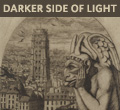 |
The Darker Side of Light: Arts of Privacy, 1850–1900 Late 19th–century art is usually identified with airy and colorful impressionist paintings and the radiant atmosphere of Paris. But in the shadowy recesses an art of a very different kind thrived. Prints, drawings, and small sculpture from the period present an alternative vision in depictions of the inner worlds of emotions, anxieties, and fantasies. Mainly stored away rather than openly displayed by their owners, the works in this exhibition appealed to artists and audiences devoted to a private aesthetic experience. Peter Parshall, the Gallery's curator of old master prints, talks about the works in the exhibition and their subtle and complex depictions of human psychology decades before the publication of Sigmund Freud's theories on the unconscious. Watch | iTunes | RSS |
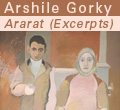 |
Arshile Gorky: Ararat (Excerpts) Years after campaigns against minority Armenians in Turkey caused his family to disperse and his mother to die before his eyes, Gorky found a 1912 photograph taken in the city of Van upon which he based drawings and paintings entitled The Artist and His Mother. The video Ararat (Excerpts) investigates the fraught history of Gorky's lost childhood through his protracted work on the image of himself at age 12, standing beside his mother Shushan. Derived from the feature-length film Ararat written and directed by Academy Award®-nominated director Atom Egoyan. Watch | iTunes | RSS |
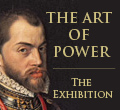 |
The Art of Power: Royal Armor and Portraits from Imperial Spain The Iconography of Power The armor, paintings, and tapestries in the exhibition were made for the Spanish royal family—the nobles, kings, and Holy Roman Emperors who expanded Spain's influence throughout Europe and the New World. These objects reveal the exquisite work of artists and craftsmen who served the Spanish ruling class from the 15th to the 18th century. In the intricate and finely wrought details on shields, portraits, and tapestries, something quite different is also revealed: an attempt to link the Spanish monarchy with the pieties of the Catholic Church, the power of the ancient Roman empire, and the cultural glories of ancient Greece. David Brown, curator of Italian and Spanish paintings at the National Gallery of Art, describes this subtle advertising campaign waged by the Spanish throne to advance its goals and reputation. Watch | iTunes | RSS |
 |
LOOK! Join area students on a field trip to the National Gallery of Art and discover the museum through their eyes and voices. This film was made to prepare students for a visit to the museum. Teachers of grades 2 through 6 are encouraged to view the film with their students prior to their visit. Watch | iTunes | Watch on ArtBabble | RSS |
 |
Rachel Whiteread: Ghost In her breakthrough 1990 work Ghost, Rachel Whiteread created a positive from a negative, making a plaster cast of the interior void of a Victorian parlor measuring approximately 9 feet wide, 11 1/2 feet high, and 10 feet deep. Whiteread has said of this sculpture that she was trying to mummify the air in the room, hence the title. Whiteread created Ghost over a period of three months in an abandoned building at 486 Archway Road, North London, covering the interior walls with multiple plaster molds, each about five inches thick. When the plaster dried, she peeled the molds from the walls and reassembled them on a steel frame. In this interview Whiteread discusses the process of making Ghost and lends new insight to her work. Watch | iTunes | Watch on ArtBabble | RSS |
 |
The Art of Power: Royal Armor and Portraits from Imperial Spain Press Conference Highlights The dramatic installation of rare suits of armor worn by Spanish kings, royal portraits, and magnificent tapestries from the Renaissance are accompanied by music and brief remarks from the press preview on June 23, 2009, for this stunning and historic exhibition. Speakers include Earl A. Powell III, director, National Gallery of Art; His Excellency D. Jorge Dezcallar, ambassador of Spain; Yago Pico de Coaña, president, Patrimonio Nacional; Charo Otegui Pascual, executive president, SEACEX; Alvaro Soler del Campo, director, Spanish Royal Armory, and chief curator, Patrimonio Nacional; and José Andrés, chef and owner, Jaleo and THINKfoodGROUP. Watch | iTunes | RSS |
 |
Talk About Art Talk About Art is a six-minute documentary film that highlights visitors to the National Gallery of Art in Washington, DC. Among the visitors who share their thoughts on art are people from all walks of life—including students, a taxi driver, an architect, a security guard, and a hairdresser. These are not art historians, but art is a common bond for them, and definitely a force in their lives. For some art is a way to connect to the past; for others it is a way to see the world around them in a different way. Listening to their side of the museum experience may get you talking about art as well. Watch | iTunes | Watch on ArtBabble | RSS |
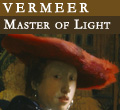 |
Vermeer: Master of Light, Parts 1-5 Vermeer: Master of Light is a visual pilgrimage in search of what makes a Vermeer a Vermeer. It is a journey of discovery, guiding the viewer through an examination of three of Johannes Vermeer's paintings and exploring the secrets of his technique. Utilizing the potential of x-ray analysis and infrared reflectography as well as the power of computer technology, the program delves beneath the surface of the paintings to unveil fascinating insights into Vermeer's work. This film celebrates one of the most extraordinary painters in the history of art. Narrated by Meryl Streep, with commentary by Arthur Wheelock, curator of northern baroque paintings, National Gallery of Art, and David Bull, conservator Watch | iTunes | Watch on ArtBabble | RSS |
 |
Multiverse, Leo Villareal Installation, Parts 1-4 Multiverse (2008), a site-specific LED sculpture by Leo Villareal, is on view in the Concourse walkway connecting the East and West Buildings of the National Gallery of Art. The sculpture, which includes approximately 41,000 LED (light-emitting diode) nodes controlled by custom-designed software, is Villareal's largest and most ambitious work to date. Learn more about the artist's programming method as well as his conceptual and technological inspiration in this studio interview. The sculpture was generously funded by Victoria and Roger Sant and Sharon P. and Jay Rockefeller. Watch | iTunes | Watch on ArtBabble | RSS (14:18 mins.) |
 |
Pompeii and the Roman Villa: Art and Culture around the Bay of Naples Narrated by Sir Derek Jacobi and produced by the National Gallery, this excerpt is from a new documentary film that examines the explosion of artistic activity around the Bay of Naples beginning in the first century BC. The film includes original footage of houses in Pompeii and of the seaside villas that dotted the coastline of the Bay of Naples. The 30-minute version of the film is on view and for sale at the National Gallery of Art. The film is made possible by the HRH Foundation. Produced in conjunction with the exhibition Pompeii and the Roman Villa: Art and Culture around the Bay of Naples. Watch | RSS (2:28 mins.) |
 |
Empire of the Eye: The Magic of Illusion, Parts 1-7 The Magic of Illusion—presented here in a seven-part podcast series—is a film about how we see, what we see, or what it is we think we see. Al Roker guides us on a journey into the secrets of illusion, utilizing special effects to illustrate the artistic and visionary discoveries of the Renaissance. While Copernicus and Columbus were changing our understanding of the world, the Renaissance masters were dramatically changing the way we see that world. The film uses recent technology to look at old works in new ways. Each segment of this podcast presentation unlocks new secrets of illusion and perspective as seen in the works of old masters. This program made possible by The Arthur Vining Davis Foundations. Watch | iTunes | Watch on ArtBabble | RSS (27:14 mins.) |
 |
Martin Puryear Installation: Ladder for Booker T. Washington Over the course of seven hours, on June 5, 2008, Martin Puryear and 12 art handlers installed Ladder for Booker T. Washington at the National Gallery of Art in the West Building, Rotunda. This time-lapse movie demonstrates the process of hoisting the 36-foot-long ash and maple sculpture into the Rotunda in the West Building of the National Gallery of Art. Produced in conjunction with the exhibition Martin Puryear. Watch | iTunes | Watch on ArtBabble | RSS (2:14 mins.) |
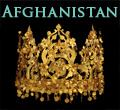 |
Afghanistan: Hidden Treasures from the National Museum, Kabul This two-minute trailer of the new documentary produced by Blue Bear Films for the National Geographic Society on the occasion of the traveling exhibition Afghanistan: Hidden Treasures from the National Museum, Kabul features footage of the 2003 rediscovery of the collections from the National Museum, Kabul, which had been hidden in the vaults of the Central Bank in the Presidential Palace in 1988. National Geographic archaeologist Fredrik T. Hiebert and museum director Omara Massoudi give their personal accounts of this dramatic story. Watch | iTunes | RSS (2:00 mins.) |
 |
J.M.W. Turner Film This excerpt is from a new documentary chronicling the rise of one of the greatest landscape painters of all time, Joseph Mallord William Turner (1775–1851), who rendered the subtle effects of light and atmosphere in revolutionary ways. A barber's son, he entered the Royal Academy art school at age 14 and became, over the course of six decades, the leading British artist of his era. This overview of Turner's career and influences includes footage of locations important to him in Wales, Switzerland, and England, and readings from writers and artists of the era, including John Ruskin and Lord Byron. A 30-minute version of the film may be purchased at the National Gallery of Art. Narrated by Jeremy Irons and produced by the Gallery in conjunction with the exhibition J.M.W. Turner, the film is made possible by the HRH Foundation. Watch | iTunes | RSS (12:00 mins.) |
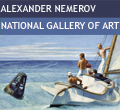 |
Wyeth Lecture in American Art: Ground Swell: Edward Hopper in 1939 Edward Hopper's paintings often show people and places in states of enigmatic isolation, loneliness, and contemplation. These are among the fabled Hopper themes—so fabled it would hardly seem possible to go beyond them to give another account of his art. Focusing on one Hopper painting, Ground Swell of 1939, this lecture by Alexander Nemerov tries to provide a thicker, denser, more surprising story of what it meant for Hopper to make a painting, especially in the year 1939. Produced in conjunction with the exhibition Edward Hopper. Watch | iTunes | Watch on ArtBabble | RSS (52:13 mins.) |
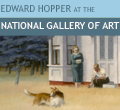 |
Edward Hopper's New York The National Gallery of Art has released a new video podcast about the artist and his work and influence. In the podcast, which features more than 50 of Hopper's paintings and watercolors, senior curator Franklin Kelly discusses New York City, New England, and the cinema as Hopper saw and portrayed them—and as we view them today through his work. The filming of the podcast was made possible by Booz Allen Hamilton Inc. Music composed and performed by Scott Silbert of the US Navy Band. Music engineered by David Morse of the US Navy Band. Produced in conjunction with the exhibition Edward Hopper. Watch | iTunes | Watch on ArtBabble | RSS (8:47 mins.) | Transcript |
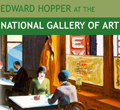 |
Edward Hopper Film This excerpt is from a new documentary produced by the National Gallery of Art that includes archival footage of Edward Hopper (1882–1967), new footage of places that inspired him in New York and New England, including his boyhood home in Nyack and his studio on Washington Square, where he lived and worked for more than 50 years. Narrated by actor and art collector Steve Martin, this film traces Hopper's varied influences, from French impressionism to the gangster films of the 1930s. Artists Red Grooms and Eric Fischl discuss Hopper's influence on their careers. Curators discuss recent and diverse perspectives on Hopper's art. The 30-minute version of the film is on view and for sale at the National Gallery of Art. The film is made possible by the HRH Foundation. Produced in conjunction with the exhibition Edward Hopper. Watch | iTunes | RSS (3:26 mins.) |
 |
Mel Bochner Installation: Theory of Boundaries (1969–1970) Over the course of three days, from February 14 to 16, 2007, Mel Bochner and his assistant Nicholas Knight installed Theory of Boundaries at the National Gallery of Art. The work, whose size is determined by the length of the wall on which it is installed, consists of four squares of equal size, each separated by a space equal to one-third of the width of a single square. Following the principles determined by the language fraction of each square (hence the work's title, Theory of Boundaries), dry pigment is applied directly to the wall, with each of the four squares demonstrating a different relationship of the color surface to its border and state of enclosure. Produced in conjunction with the installation Mel Bochner: Theory of Boundaries (1969–1970). Watch | iTunes | Watch on ArtBabble | RSS (2:01 mins.) |
 |
Paul Mellon: in His Own Words This film celebrates the spirit and philosophy of Paul Mellon. The narration is comprised of his own words drawn from interviews, speeches and a variety of writings. He takes us on a gentle journey into his passions and interests in life including family, art, collecting, horses, and racing. The film captures the gentle nature and wisdom of an extraordinary man. Produced in conjunction with the exhibition Celebrating the Legacy of Paul Mellon at the National Gallery of Art. Watch | iTunes | Watch on ArtBabble | RSS (48:00 mins.) |
Notable Lectures | Video Podcasts | Music Programs | The Diamonstein-Spielvogel Lecture Series | The Sydney J. Freedberg Lecture on Italian Art | Elson Lecture Series | A. W. Mellon Lectures in the Fine Arts | Conversations with Artists Series | Conversations with Collectors Series | Wyeth Lectures in American Art Series
